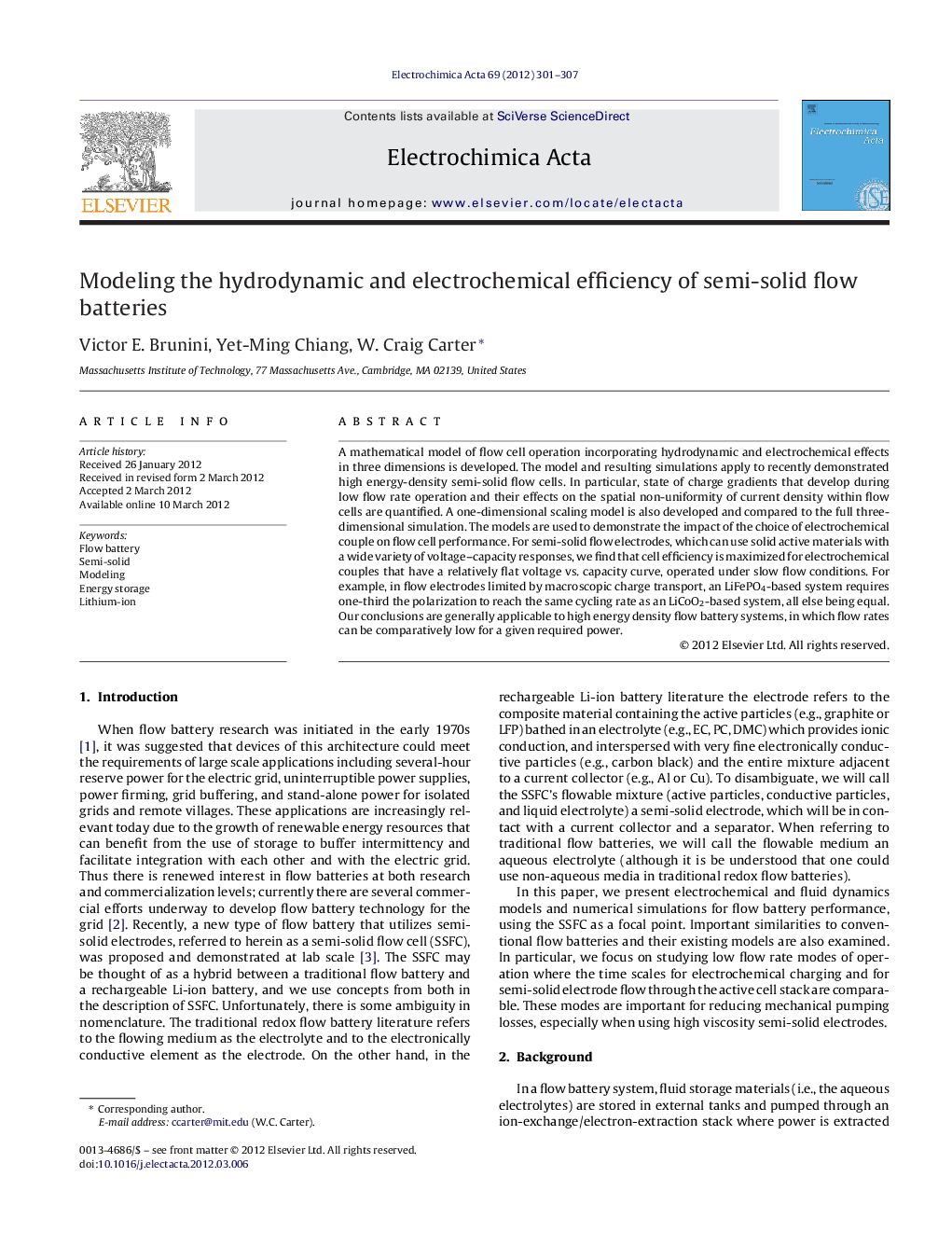| Article ID | Journal | Published Year | Pages | File Type |
|---|---|---|---|---|
| 188758 | Electrochimica Acta | 2012 | 7 Pages |
A mathematical model of flow cell operation incorporating hydrodynamic and electrochemical effects in three dimensions is developed. The model and resulting simulations apply to recently demonstrated high energy-density semi-solid flow cells. In particular, state of charge gradients that develop during low flow rate operation and their effects on the spatial non-uniformity of current density within flow cells are quantified. A one-dimensional scaling model is also developed and compared to the full three-dimensional simulation. The models are used to demonstrate the impact of the choice of electrochemical couple on flow cell performance. For semi-solid flow electrodes, which can use solid active materials with a wide variety of voltage–capacity responses, we find that cell efficiency is maximized for electrochemical couples that have a relatively flat voltage vs. capacity curve, operated under slow flow conditions. For example, in flow electrodes limited by macroscopic charge transport, an LiFePO4-based system requires one-third the polarization to reach the same cycling rate as an LiCoO2-based system, all else being equal. Our conclusions are generally applicable to high energy density flow battery systems, in which flow rates can be comparatively low for a given required power.
